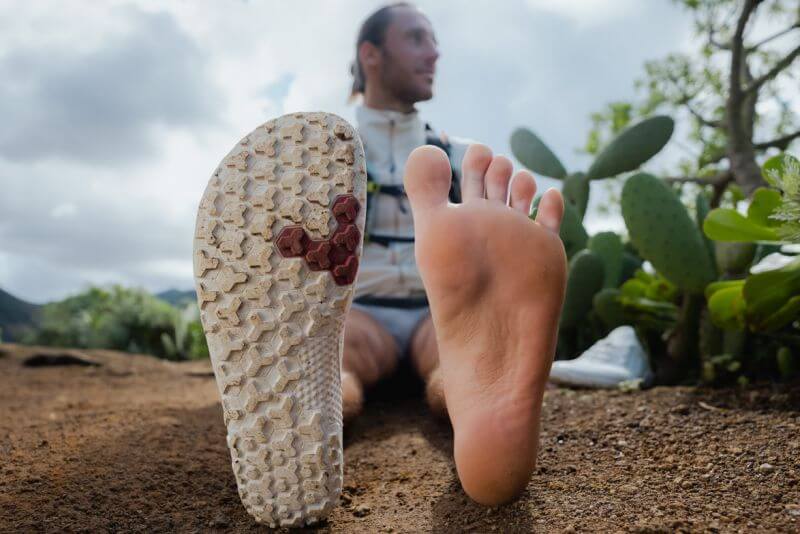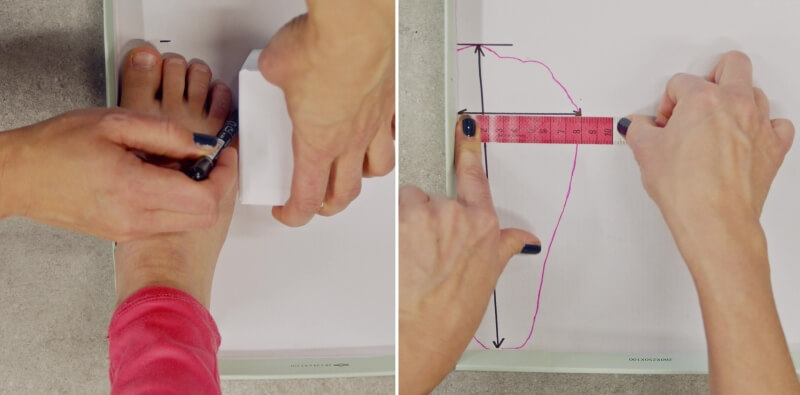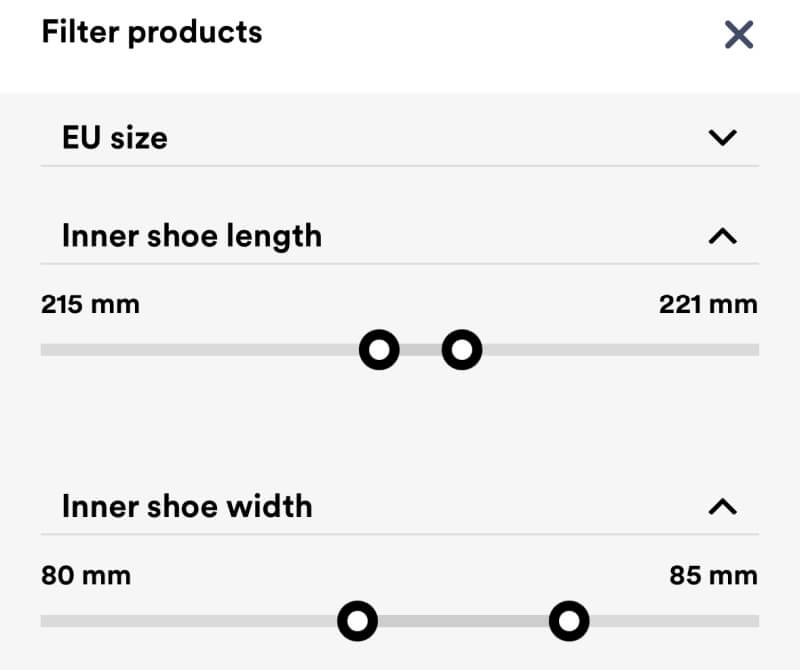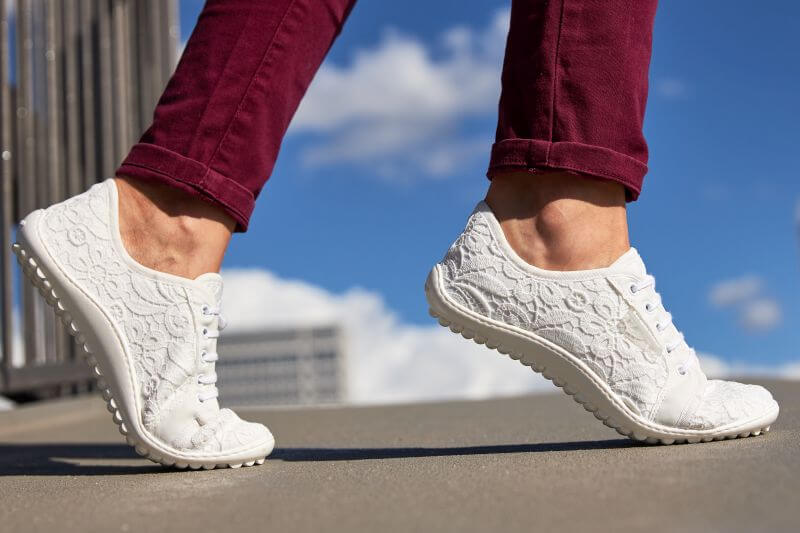On this page you will find a detailed guide to choosing the right shoes for you or your children.
Content of the article
- What shoes to choose?
- How to choose a shoe size?
- Where to get help with selection?
- Where to buy shoes?
What shoes to choose?
For healthy feet, you need shoes that respect the needs of the foot, specifically:
- With a wide toe box - so that the toes do not get squashed in the shoe, but instead have room to actively engage in movement
- With a flat sole - so that the body's centre of gravity is in the correct position and the joints are not overloaded
- Overall flexible - to allow the foot to respond naturally to uneven surfaces
So look for barefoot shoes, which make up the majority of our range.

How to choose shoes?
First, decide for who you are buying the shoes. In our assortment you will find shoes for:
Then, decide for what purpose or season you need the shoes. Barefoot shoes are divided into:
- sneakers - light and breathable shoes for the city and outdoors, suitable for dry weather
- outdoor shoes - sneakers suitable for trips, with thicker soles or better anti-slip pattern
- athletic shoes - sneakers suitable for all types of sports activities
- slip on shoes - slip on shoes
- sandals - open summer shoes
- winter boots - insulated boots and snow boots
- all-season low top shoes - closed low shoes suitable for any season
- high top shoes - closed higher shoes, suitable for the colder autumn
- knee high boots - high boots for girls or women
- ballet flats - ballerinas for girls or women
- rain boots - rubber boots for rain and mud
- slippers and water shoes - garden shoes for the pool and swimming shoes
- house slippers - slippers for children for school or kindergarten
- toddler shoes - selected outdoor shoes for first-time walkers
- infant shoes - soft leather house shoes for first baby steps
- sock shoes - socks with soles
Depending on the shoe you need, select the appropriate shoe category in the top menu.
Special shoes
If you are looking for special shoes for your health problems, barefoot shoes can help you improve your musculoskeletal health. Our customers are often concerned about:
- sore back, hips, knees, ankles
- hallux valgus (bunions)
- flat feet
- heel spur
- collapsed arch
- valgus ankle (bunion)
Barefoot footwear is beneficial not only for children, but also for seniors, however, if you have a medical condition, always discuss the recommended footwear with your doctor first.
How to choose a shoe size?
When you are sure about the type of shoe, all you need to do is to determine the appropriate size. Unfortunately, the numbering of shoes varies slightly between manufacturers, so choosing a shoe size based on your usual size is not as reliable as choosing shoes based on the exact length of your foot. Thus, start by carefully measuring your foot.
How to measure foot size?
Measuring your foot can be done in three easy steps:
-
Stand (full weight and barefoot) on the paper at the stop (against the wall, in the box).
-
Make a mark in front of your longest toe and at the widest point (hold the pencil perpendicular to the paper).
-
Measure the length from the middle of the heel to the longest point (you have the length of the foot), or from the edge of the shoe box perpendicular to the widest point (you have the width of the foot).

How much room to leave in the shoe?
The foot needs room in the shoe, so you need to add the extra space to the measured length of the foot. For children it is larger because of the expected growth of the foot, for adults a smaller one is sufficient to reflect the room for toe movement and a margin for any swelling of tired feet during the day.
The recommended extra space takes age, walking style and shoe type into account:
- for beginners (new walkers), do not complicate the uncertain steps with a larger shoe and minimize the extra space in the first shoe to 5-9 mm, even at the cost of having to replace the infant shoes for babies or the toddler shoes for first walking very soon
- active walkers (who have been walking on their own for more than 3 months) can usually manage an extra spaceof 10-12 mm, just make sure they walk naturally, don't trip, don't wiggle their toes and don't shuffle their feet
- children's winter boots can be taken with a margin of up to 15 mm to allow for thicker socks
- children's sandals and ballerinas should be up to 10 mm of extra space
- for adults, the extra space is very individual, so make sure you have a good feeling, but leave at least 4-5 mm of space in front of your toes, for running or trekking and winter shoes, don't be afraid to add 7-10 mm of extra space
By adding the measured length of the foot and the appropriate oversize you will get the required inner length of the shoe.
How to find the right shoe size?
To select the right fitting shoes, use the internal shoe length filter in the desired category in the eshop. It is better to leave the filter a small range (+/- 3 mm) to offer more models. We carefully measure the inner length of all shoe models with a Plus12 measuring device.

For a more narrow selection, you can optionally select and filter other parameters, such as the inner width of the shoe, manufacturer, colour, shoe type, etc.
Where to get help with choosing shoes?
Each foot is original, so we will be happy to help you with the selection personally. Yo can contact us:
- by email at hello@footic.com
- call us on +420 777 00 40 50
- via chat on the website
- you can reach us on IG and FB (footiccom)
Customer support operates for you on weekdays from 8 am to 5 pm. You can also use our shopping guide where we answer the most frequent questions. For useful information about the differences between the shoes, please check out our regular comparison reviews.
How to decide when you are hesitating?
If your measured size (including the extra space) are exactly between two sizes, you are probably hesitating which one to choose. There are several options to help you out:
- in general, choose a larger size rather than trying to squeeze your foot in the shoe
- the smaller size may be useful for children towards the end of the season, it fits them better now and by the next season the foot will have grown several sizes anyway
- alternatively, try a completely different brand of shoe, you may get a better fit with their numbering
The fit of the shoes can also help in deciding between similarly sized shoes. Find out what type of foot you have (foot shape, heel width, heel height, toe shape, ...), in the descriptions of each shoe you will then find the characteristics of what type of foot it fits best. Alternatively, send us a photo of your foot for consideration, we will be happy to help you.
Which shoes to buy?
If your situation allows it, always buy new barefoot shoes. Buying worn-out shoes from a second-hand shop carries a double health risk. Firstly, stepping on them can dislodge the new owner's foot from its optimum position, and communicable skin diseases cannot be ruled out. If you do choose inherited shoes, then only choose those that are minimally used and in perfect condition.

Where to buy shoes?
There are various barefoot shoe stores, here at Little Shoes we bring you:
- The assurance of buying comfortable shoes - trust the hundreds of user reviews with an average close to 100% satisfaction
- A wide selection of children's shoes and adult barefoot shoes - you'll find the right model better here than anywhere else
- Everything in stock for fast shipment - you can have your new shoes within 48 hours
- Three weeks for returns - try on your shoes comfortably at home and return the ones that don't fit by sending them via parcel delivery.
- First-class information and customer service - we collect information about shoes for you daily, help you with your selection, handle returns and much more
We have been selling barefoot shoes for 10 years, constantly improving the service we provide.
What accessories to buy with shoes?
Have you ever been offered shoe care products at the checkout in a shoe store? They don't try to annoy you with it, but rather extend the life of your shoes with regular care. At the very least, waterproofing is a good idea to purchase with the shoes, and there are many interesting optional accessories, from socks and umbrellas to balancing aids.
How to get a discount on shoes?
If you are already certain about your choice of shoes, the only thing left to do is to complete your order. We recommend that you create an account with us and return to Footic regularly, as we offer registered customers discounts on all purchases and many other bonuses as part of our loyalty program.
